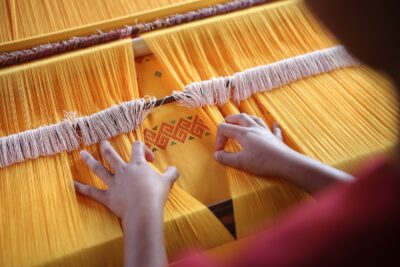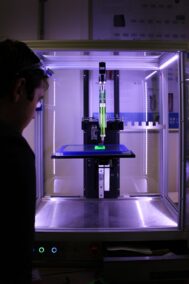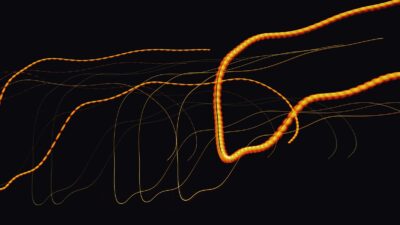Innovative Solutions with Smart Textiles and Nanotechnology
Exploring the Intersection of Nanotechnology and Smart Textiles
Smart textiles, powered by nanotechnology, are reshaping the landscape of fashion and wearable technology. These innovative fabrics integrate nanomaterials to offer functionalities beyond traditional textiles, such as moisture management, temperature regulation, and even biometric sensing. In the dynamic textile industry of Saudi Arabia and the innovation hub of the UAE, the convergence of nanotechnology and textiles is driving unprecedented advancements and opening new avenues for creative expression and technological innovation.
The Role of Nanotechnology in Fabric Development
Nanotechnology plays a crucial role in the development of smart textiles by enabling the integration of functional nanomaterials into fabric fibers. These nanomaterials, engineered at the nanoscale, possess unique properties that enhance the performance and capabilities of textiles. For example, nanoparticles embedded in fabric can provide antimicrobial properties, odor control, and UV protection. Additionally, nanofibers with conductive properties enable the creation of electronic textiles (e-textiles) for applications such as wearable sensors and interactive garments. By harnessing the power of nanotechnology, textile manufacturers in Saudi Arabia and the UAE are pioneering the next generation of smart and sustainable fabrics.
Applications and Benefits of Smart Textiles
Smart textiles offer a wide range of applications across various industries, from fashion and sports to healthcare and military. In the fashion industry, nanotechnology-enabled fabrics allow designers to create garments that are not only stylish but also functional and interactive. From self-cleaning fabrics to color-changing textiles, smart textiles offer endless possibilities for innovation and personalization. In healthcare, smart textiles equipped with biosensors can monitor vital signs and detect health conditions in real-time, revolutionizing patient care and remote monitoring. As the demand for wearable technology continues to grow, smart textiles will play an increasingly important role in enhancing comfort, performance, and well-being.
Embracing Innovation and Sustainability in Textile Design
Driving Sustainable Practices with Smart Textiles
Smart textiles contribute to sustainability in the textile industry by offering solutions that reduce waste and resource consumption. Nanotechnology-enabled fabrics with self-cleaning and stain-resistant properties require less frequent washing, leading to water and energy savings. Additionally, smart textiles with biodegradable components and recyclable materials support circular economy principles, minimizing environmental impact throughout the product lifecycle. By embracing smart textiles and sustainable practices, textile manufacturers in Saudi Arabia and the UAE can meet consumer demand for eco-friendly products while driving innovation and competitiveness in the global market.
Innovative Design and Personalized Experiences
The integration of nanotechnology into textile design enables personalized and adaptive experiences for consumers. Smart textiles can be programmed to respond to environmental cues or user inputs, providing customized functionality and comfort. For example, temperature-responsive fabrics can adjust their insulation properties based on ambient conditions, ensuring optimal comfort in changing weather. Similarly, wearable technology embedded in garments can enhance user engagement and connectivity, transforming clothing into interactive and experiential platforms. By embracing innovative design concepts and smart textile technologies, fashion brands in Saudi Arabia and the UAE can differentiate themselves in the market and cater to evolving consumer preferences.
Conclusion: Shaping the Future of Fashion with Smart Textiles
Leading the Way Towards Technological Advancements
Smart textiles powered by nanotechnology represent a paradigm shift in fashion and textile design, offering unprecedented possibilities for innovation and sustainability. In Saudi Arabia and the UAE, where creativity meets technological prowess, the adoption of smart textiles is driving transformative changes in the fashion industry. By leveraging nanotechnology and embracing sustainable practices, textile manufacturers and designers can create garments that are not only aesthetically appealing but also functional, intelligent, and eco-friendly. As smart textiles continue to evolve, they will play an increasingly important role in shaping the future of fashion and enhancing the way we interact with clothing and technology.
Pioneering a New Era of Wearable Innovation
As we embark on this journey towards a smarter, more sustainable future, smart textiles will undoubtedly lead the way in redefining fashion and wearable technology. From high-performance activewear to everyday apparel embedded with intelligent features, the possibilities are endless. By fostering collaboration and embracing interdisciplinary approaches, the textile industry in Saudi Arabia and the UAE can drive continued innovation and set new standards for excellence in fashion and technology.
—
#SmartTextilesNanotechnology, #AdvancedFabricTechnology, #NanotechApplications, #TextileInnovation, #SaudiArabiaTextileIndustry, #UAEInnovationHub, #NanomaterialsInFashion, #WearableTechnologyAdvancements























